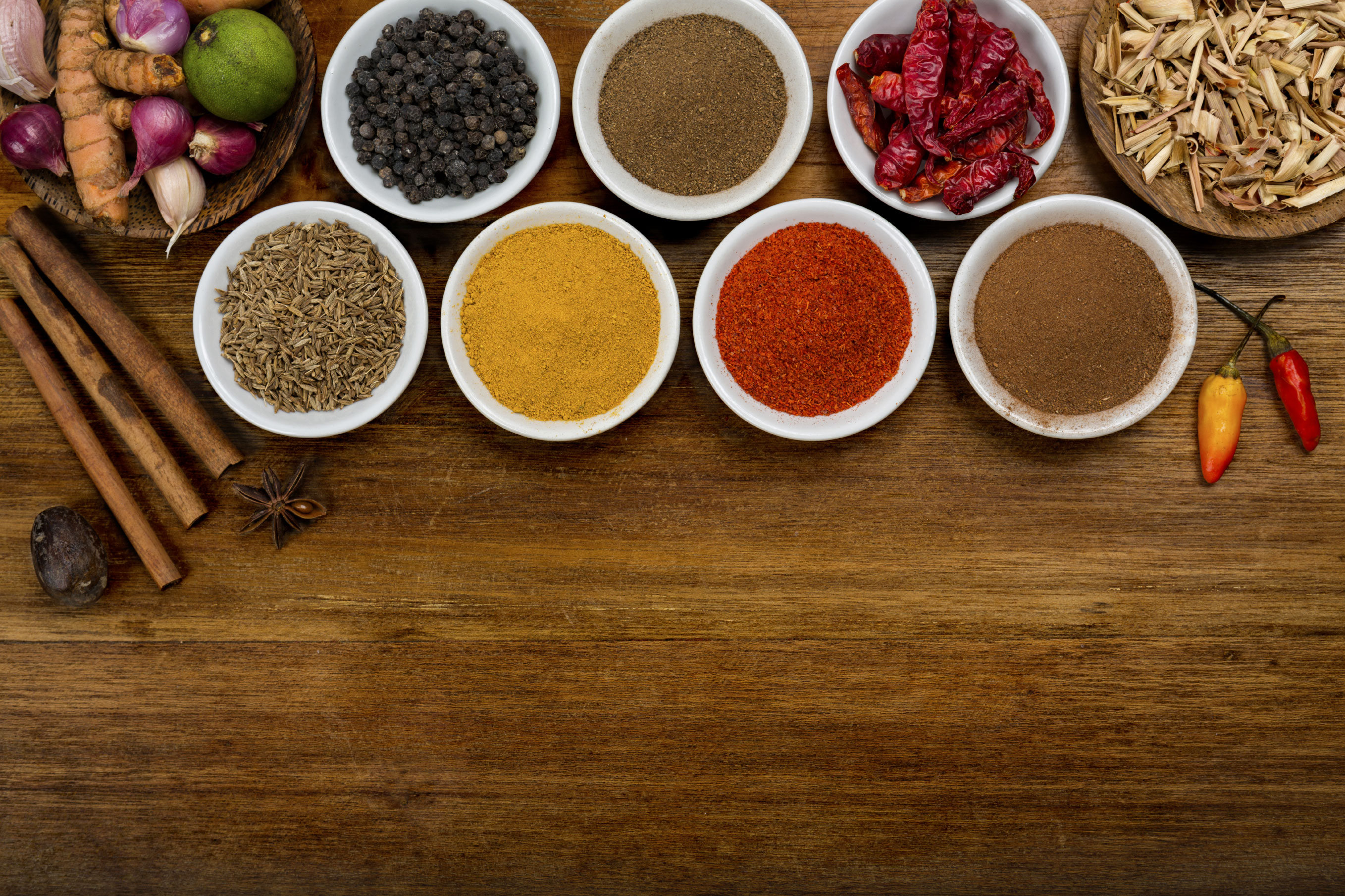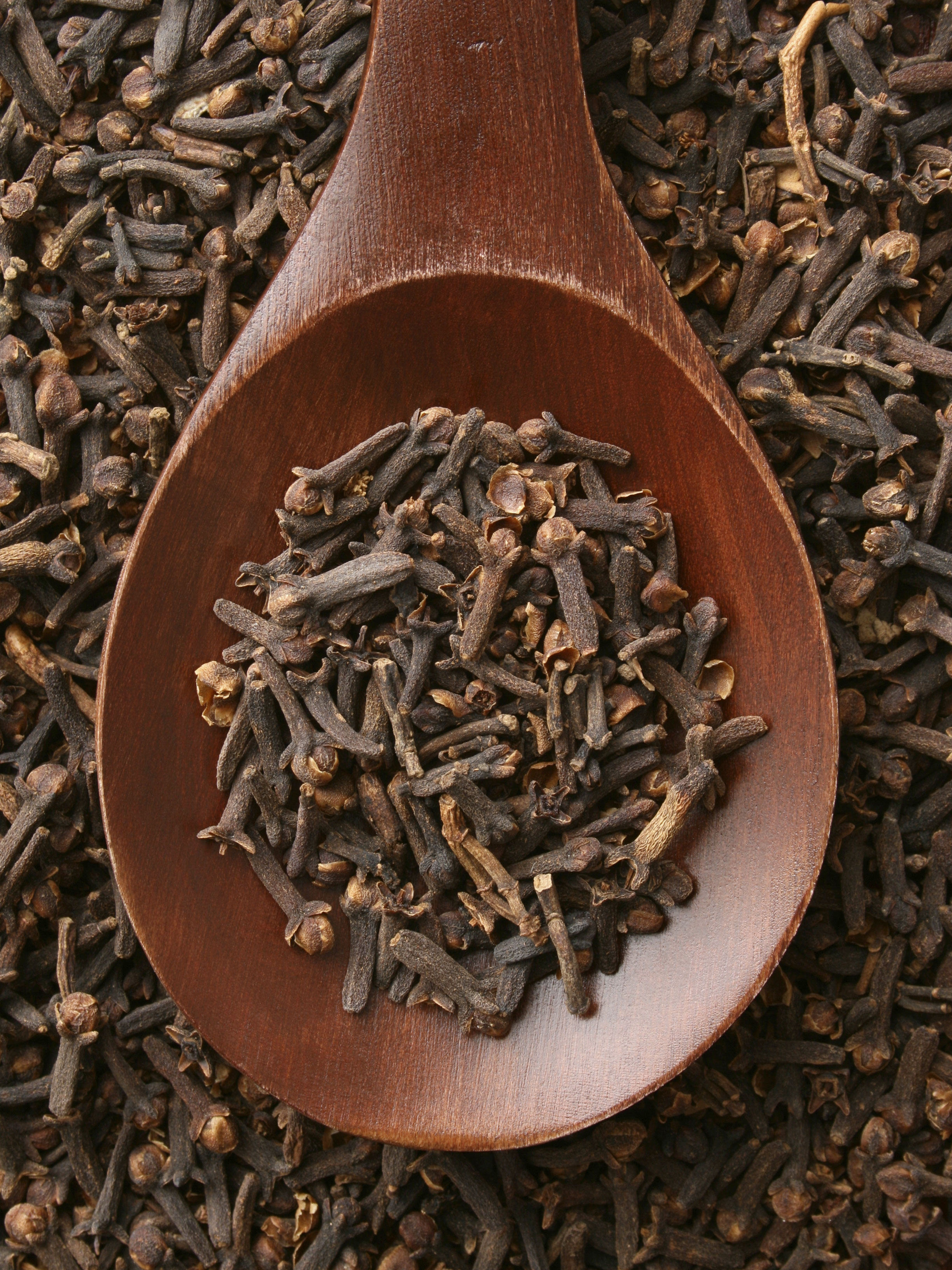
from Herbalist Erin Smith
Spices, and our desire for their varied and exotic flavors, have shaped history. Many of our favorites were once in such demand they were worth more than gold. But there was a more practical side to their popularity as well. Before refrigeration, the antimicrobial properties and high antioxidant content of many of our spices played an important role in keeping food fresh. They improved digestion and helped fight off stomach bugs and other food-bourn illnesses. Even today, in most cultures, spices have an important medicinal role outside of the kitchen.
Do you know the medicine you have in your spice cabinet?
Here are five spices that are packed full of health benefits as well as flavor:
Today there are over 100 varieties of thyme and all of them are medicinal. Thyme contains the constituent thymol, one of the most potent natural antiseptics (Oregano and Monarda spp. also contain thymol). It’s powerful antiviral, antibacterial, and antifungal properties make it a medicinal powerhouse (Dzamic et al., 2015; Nabavi et al., 2015). It is especially effective in easing the symptoms of chest infections (Li et al, 2014). Thyme helps calm coughs, is anti-inflammatory (Algieri, et al., 2014), and helps protect against tooth decay (it is the primary ingredient in Listerine). A strong tea is traditionally used to ease the symptoms of a variety of conditions from the common cold to menstrual cramps and stomach bugs throughout the Mediterranean and North Africa. To relieve chest congestion, boil a large pot of water and add a large handful of dried thyme (if using fresh thyme add more). Cover immediately and let sit for 5 minutes to keep the essential oils from evaporating. Sit under a blanket or a large towel (making sure that your head is completely covered) with the pot. Remove the lid and inhale the steam. Take deep breaths. Stay under as long as you can stand the heat. Repeat morning and night until your symptoms improve.
Cayenne (Capsicum annuum)
This spicy favorite is high in vitamin A and C. All peppers are essentially different varieties of the same species. What determines their heat is the amount of capsaicin they contain: the hotter the pepper, the more capsaicin. Cayenne, rich in capsaicin, is a wonderful pain reliever and can ease arthritis pain. In addition, it has been found to increase levels of natural lubricants in our joints, relieving stiffness and easing movement (Srinivasan, 2015). Make a cayenne salve and rub into arthritic joints. Cayenne also helps lower cholesterol and increase metabolism (Ibid). Cayenne is also styptic (stops bleeding) and is an excellent first aid herb. Sprinkle dried cayenne powder on a cut finger or other wounds and it will stop the bleeding. It does not hurt!
Note: never apply fresh peppers to the skin.
Rosemary (Rosmarinus officinalis)
This beautiful Mediterranean plant increases circulation and has a long history of use for improving memory. It’s high in antioxidants and is antibacterial. Externally, research has shown that it protects the skin from sun-damage and can help prevent melanoma (Cattaneo et al., 2015). Rosemary lifts the spirits and can help ease depression. Use rosemary in a strong tea to ease symptoms of colds, coughs, and chest infections. It’s a great study aid too!
Turmeric (Curcuma longa)
A long-time kitchen staple in India, turmeric is now commonly used all over the world, especially for its rich yellow color. It is also has amazing health benefits and has been used for thousands of years to treat a number of ailments. Modern research is beginning to confirm these traditional uses. Research has found it to be a powerful anti-inflammatory and beneficial for any inflammatory conditions, particularly for arthritis and other musculoskeletal inflammatory conditions (Ghosh et al., 2015). It can help speed healing, whether internal injury and trauma or external cuts and bruises (Jagetia and Rajanikant, 2004). It is helpful for headaches, lowers cholesterol, and increases blood flow throughout the body. It gently stimulates the liver and improves digestion (Ghosh et al., 2015; Bundy et al., 2004). Besides enjoying it in your favorite Indian dish, try adding a ½ teaspoon of turmeric to your scrambled eggs, mix into hummus or another favorite dip. Its relatively mild taste makes it easy to add to various foods so you can enjoy the health benefits everyday.
Clove (Syzgyium aromaticum)
This winter favorite contains eugenol, a potent pain-reliever. It’s anti-inflammatory, antibacterial, and helps treat and prevent gum disease (Bhowmilk, et al., 2012); Commission E Monograph). Traditionally it was used to for tooth pain and remove worts. Research has found it to be antibacterial, antiviral and antifungal (Deans et al., 1995). Clove is strong and is best used in combination with other herbs. Add a few cloves to cinnamon tea to ease cold and flu symptoms.
This is just a small sample of some of the medicinal uses of common spices. If you want to learn more check out the book Healing Spices by Baharat B. Aggarwal and Debra Yost. *We are not compensated for the sale of this book, we just think it’s packed full of great information!
A version of this article first appeared at integrativebotancial.com and is used with permission.
References:
Algieri F, Rodriguez-Nogales A, Garrido-Mesa N, Zorrilla P, Burkard N, Pischel I, Sievers H, Benedek B, Feistel B, Walbroel B, Rodriguez-Cabezas ME, Galvez J (2014) Intestinal anti-inflammatory activity of the Serpylli herba extract in experimental models of rodent colitis, Journal of Crohns and Colitis, 8(8), 775-88.
Bundy R, Walker A. F, Middleton R. W, Booth J (2004) Turmeric extract may improve irritable bowel syndrome symptomology in otherwise healthy adults: A pilot study. Journal of Alternative and Complementary Medicine, Vol. 10, 1015–8.
Cattaneo L, Cicconi R, Mignogna G, Giorgi A, Mattei M, Graziani G, Ferracane R, Grosso A, Aducci P, Schinina ME, Marra M (2015) Anti-proliferative effect of Rosmarinus officinalis L. extract on human melanoma A375 cells, PLoS ONE, 10(7).
Deans SG, Noble RC, Hiltunen R, Wuryani W, Penzes LG (1995) Antimicrobial and antioxidant properties of Syzygium aromaticum(L.) Merr. & Perry: impact on bacteria, fungi, and fatty acid levels in aging mice, Flavour and Fragrance Journal, 10(5), 323-28.
Dzamic AM, Nikolic BJ, Giweli AA, Mitic-Culafic DS, Sokovic MD, Ristic MS (2015) Libyan Thymus capitatus essential oil: antioxidant, antimicrobial, cytotoxic and colon pathogen adhesion-inhibition properties, Journal of Applied Microbiology, 119(2), 389-99.
Ghosh S, Banerjee S, Sil PC (2015) The beneficial role of curcumin on inflammation, diabetes and neurodegenerative disease: a recent update, Food Chemistry and Toxicology, Vol. 83, 111-24.
Jagetia GC and Rajanikant GK (2004) Role of curumin, a naturally occurring phenolic compound of turmeric in accelerating the repair of excision wound in mice exposed to various forms of gamma radiation, Journal of Surgical Research, 120(1), 127-38.
Kang SH, Kim YS, Kim EK, Hwang JW, Jeong JH Dong X, Lee JW, Moon SH, Jeon BT, Park PJ (2015) Anticancer effect of thymol on AGS human gastric carcinoma cells, Journal of Microbiology Biotechnology, Oct. 6, Epub ahead of print.
Li H, Yang T, Li FY, Yao Y, Sun ZM (2014) Antibacterial activity and mechanism of action of Monarda punctate essential oil and its main components against common bacterial pathogens in respiratory tract, Int J Clin Exp Pathol, 7(11), 7389-98.
Nabavi SM, Marchese A, Izadi M, Curti V, Daglia M, Nabavi SF (2015) Plants belonging to the genus Thymus as antibacterial agents: from farm to pharmacy, Food Chemistry, Vol. 173, 39-47.
Srinivasan K (2015) Biological Activities of Red Pepper (Capsicum annuum) and its pungent principle capsaicin: a review, Critical Reviews in Food Science and Nutrition, February, Epub ahead of print.


